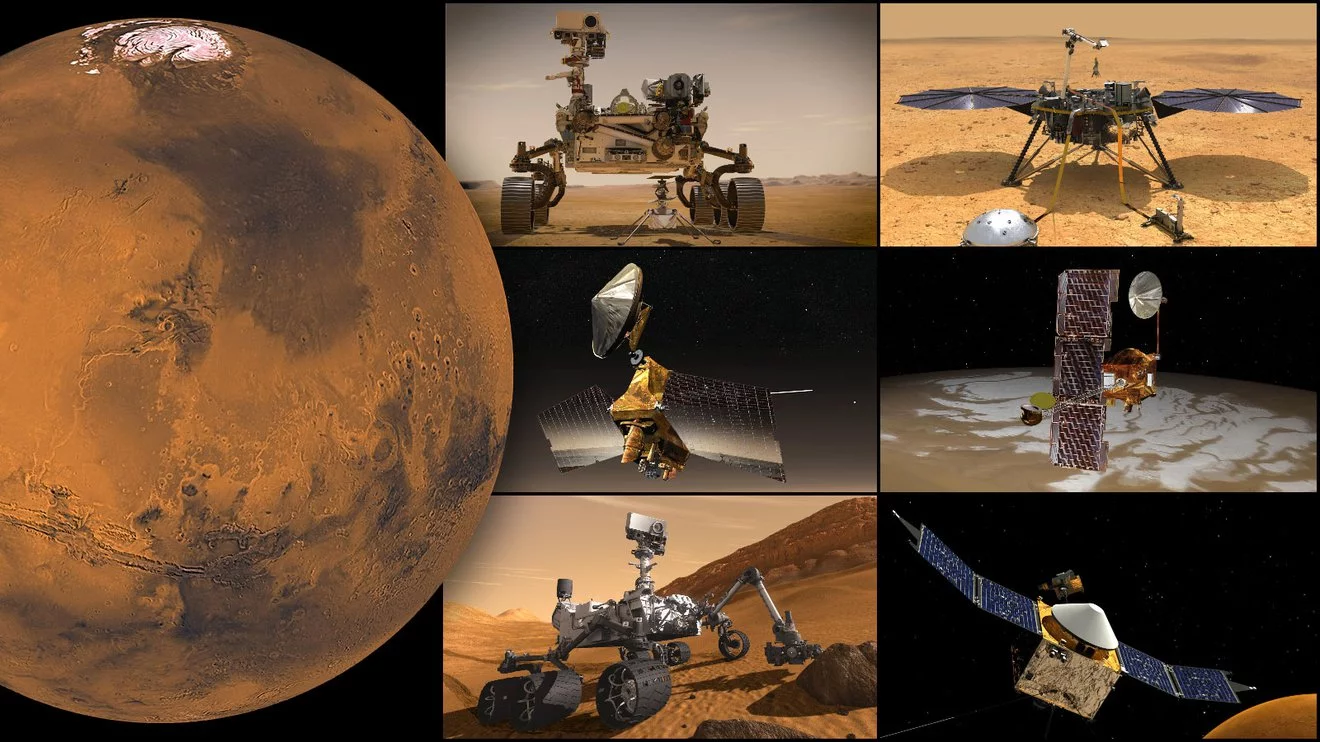All six of NASA's active Mars missions will be on light duties for the next couple of weeks as radio communications become difficult due to the Earth and Mars being on opposite sides of the Sun.
There have never been so many missions operating on the Red Planet at one time, but even after decades of technological advancements, these sophisticated robotic explorers are still at the mercy of celestial mechanics. Every two years, Mars and Earth end up on opposite sides of the Sun at a distance of 245 million miles in what is called a Mars solar conjunction.
During this conjunction, in Earth's sky, Mars is close to the Sun, as the Earth is close to the Sun in the Martian sky. This is more than a bit of astronomical trivia, it's also a major headache for space engineers. Mars doesn't actually pass behind the Sun, but it is close enough for the Sun to interfere with radio communications between the two planets. Not only does it take 22 minutes for a radio signal to travel between Earth and Mars, but the proximity of the Sun screws up communications because it is a major radio wave emitter and the ionized gas that makes up its giant corona acts like an barrier to radio signals.
Though this solar interference isn't total, it can degrade communications to the point where data and command signals can be distorted and might cause robotic spacecraft to start acting in unpredictable ways – which is something you definitely don't want to happen on a hostile alien planet hundreds of millions of miles away.
To prevent this, NASA mission control will stop sending signals after ordering its Mars spacecraft to go into a go-slow mode until the conjunction passes. Give or take a couple of days for particular missions, the communications shutdown will start on October 2 and end around October 16.
Though mission control will not be sending signals, the probes will send status updates and some data back to Earth at a low transmission rate. During this time, the Perseverance and Curiosity rovers will sit still and take weather, radiation, and other sensor measurements, the Ingenuity Mars helicopter will be grounded, and the InSight lander will continue seismic measurements. Meanwhile the Odyssey, Mars Reconnaissance Orbiter, and MAVEN orbiters will gather data and relay transmissions from the surface.
Once the conjunction is over, the spacecraft will transmit their backlog of images and other data to Earth through NASA's Deep Space Network for about a week before resuming normal operations.
"Though our Mars missions won’t be as active these next few weeks, they’ll still let us know their state of health," says Roy Gladden, manager of the Mars Relay Network at NASA’s Jet Propulsion Laboratory in Pasadena, California. "Each mission has been given some homework to do until they hear from us again."
Source: NASA





